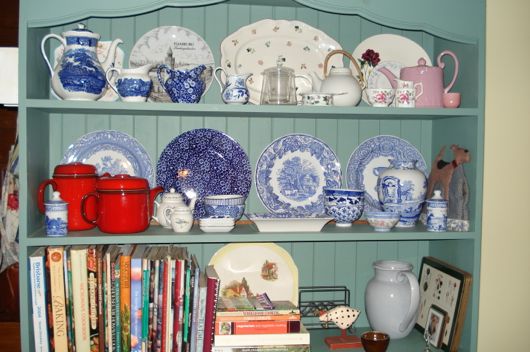During the week a wonderful comment came in on the post about Kevin's Man Made Home. It was from rabidlittlehippy. I started writing a long response but then thought it was too long and I should make a post of it. The comment follows:
I'm a stay at home mum to 3 kids 4 and under and life can be very challenging sometimes. I've also battled with depression for most of my life and ante natal and post natal depression with my older 2 kids. I only share this for context. Since falling pregnant with my youngest who is now 18 months old I have finally found my niche. I am a homemaker and budding homesteader. Greening up our lives, making do, mending and doing without as well as "damning the man" by making at home as much as I possibly can (this is a learning curve and work in progress but we are getting there) and avoiding supermarkets wherever possible has become my life. We moved in December last year to our new home on 1/2 acre in rural Victoria and I realised on Sunday that I am actually happy. :) Not every moment is cotton wool and fluffy bunnies but the satisfaction I gain from baking my own sourdough bread, growing fruit and veggies (not much harvested this season but we've learned a lot) and I'm even learning to take satisfaction and pleasure from the most mundane and despised of tasks. There is incredible satisfaction in getting my overwhelmingly large pile of clean washing folded and put away or clearing the kitchen, even if it's just stacking the dirty dishes neatly. As much as I enjoyed my work before I had kids I am not planning to return any time soon as I thoroughly enjoy my slower life. I just hope we can one day be in a position that my husband can stay home with us whilst the kids are still young enough that we can all be happy together. :)
rabid, I sometimes go through a range of emotions when I read the comments people leave here. When I read your comment it was joy, and from "sunday" onwards, I smiled all the way to the end. I brought it over here so everyone can read it. Sometimes when I talk about happiness, I think many readers believe I'm smiling all through the day or that I have the most wonderful home life, or even that my expectation of happiness is so high, I trip over it. But you know EXACTLY what I'm talking about. What you've described above is what I feel.
It's a feeling of low simmering contentment and fleeting happiness throughout the day. And it's brought about by the daily tasks I carry out every day. You're right, it's not all cotton wool and bunnies, it's satisfaction, self-reliance and doing the ordinary work of a simplified life that makes it so. When you go about housework by rushing through it, you don't feel this. The slowness of our days seems to magnify it, and makes it tangible.
Happiness is rarely one big thing, it's a hundred small fragments that come together to make what we feel. Those hundred things can be the tasks we carry almost every day, what we see around us, what we learn or simply knowing that our life is what we make it. Many others look at this life and shake their head in disbelief that anyone would want to make bread when you can buy it, or knit, or be made happy by folding clothes and stacking dishes. What they are seeing is the physical work carried out, but they don't understand that doing those things - knowing how to do them, having the time for them and being content to give that time brings about a level of satisfaction not much else can match. I'm sure there'll be readers wondering what I'm going on about just by writing that sentence. But you and I know. And that's enough.
This way of living gives you a real purpose. You feel that purpose when you know your house work is important and you know that by doing it you help make your home more sustainable. You take control of your domestic tasks, make menu plans, stockpile, work to a routine and a budget, you work with a purpose and to a plan. And during the day, while you're doing all the tasks that bring a family together by providing good food, clean clothes and comfy beds, happiness is always lurking. It's there for all of us, not just the mothers who stay at home; this is not tied to gender, marital status, or whether you live with two cats or ten children. It's there for all of us who work in our homes and love it.
This way of living gives you a real purpose. You feel that purpose when you know your house work is important and you know that by doing it you help make your home more sustainable. You take control of your domestic tasks, make menu plans, stockpile, work to a routine and a budget, you work with a purpose and to a plan. And during the day, while you're doing all the tasks that bring a family together by providing good food, clean clothes and comfy beds, happiness is always lurking. It's there for all of us, not just the mothers who stay at home; this is not tied to gender, marital status, or whether you live with two cats or ten children. It's there for all of us who work in our homes and love it.
























































